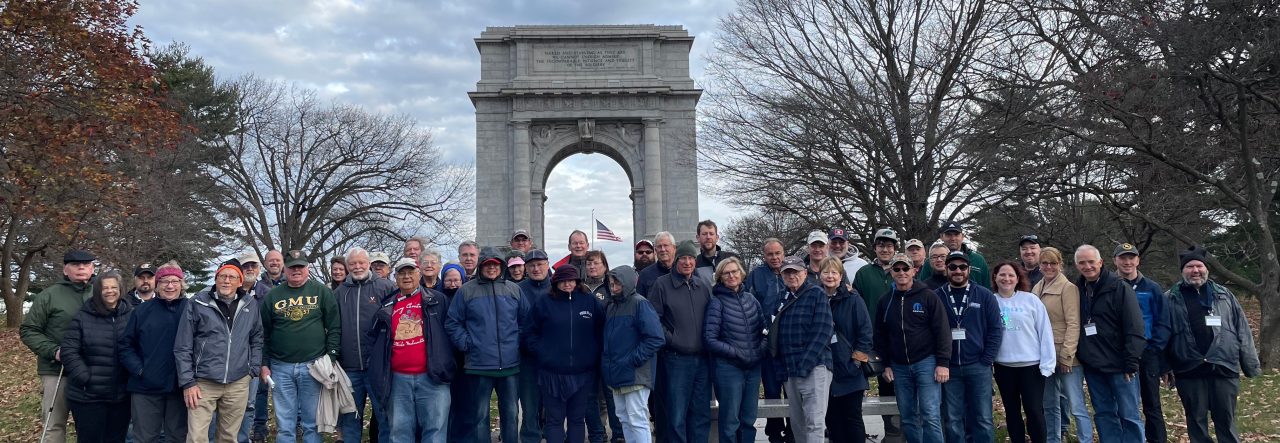How time and memory have not been kind to the most important campaign in American history.
Nearly a million people visit Gettysburg every year. Those visitors stand at Little Round Top or on Cemetery Ridge and reflect on what happened there in the summer of 1863. They go to Gettysburg because it is remembered as a major turning point in the Civil War and where the fate of the entire nation hung in the balance for a few days. How would the world have been different had General Meade’s left flank collapsed on July 2nd or had Robert E. Lee’s desperate frontal assault on July 3rd been successful? Gettysburg is a place where one can ponder this and the sheer number of books, articles, monuments and visitors prove how important this narrative is to the American people.
Not too far away in New Jersey is the location of another major turning point in American history that does not draw millions of tourists. Often termed “the ten crucial days”, the Battles of Trenton and Princeton during the American Revolution saved the United States from imminent destruction during the Revolutionary War, but the actions do not hold the same mantle of importance that Gettysburg holds in American public memory.

The idea of a free and independent United States of America never came closer to complete collapse than in December of 1776. General George Washington’s military campaign that winter ultimately changed everything. Washington’s starving, freezing, and disintegrating army dramatically crossed an ice-choked Delaware River on Christmas night, marched nine miles and then attacked and defeated a Hessian garrison in Trenton. A few days later the British army descended on Washington’s force, nearly captured them all, but a daring night flank march moved Washington’s men around the British flank and struck the British rearguard at Princeton. Then they quickly escaped to western New Jersey, forcing the British back to New York City. These engagements electrified the colonies and the world and secured an immortal place in history for George Washington and his small, ragged Continental Army. British historian G.M. Trevelyan even stated “it may be doubted whether so small a number of men ever employed so short a space of time with greater or more lasting results upon the history of the world.”[1]

While the Battles of Trenton and Princeton were exponentially smaller in size and scale than the Battle of Gettysburg, the impact of the battles (and the campaign) could be placed on the same or higher importance than Gettysburg. So why is this 1776 turning point not remembered on the same scale as the 1863 turning point? There are probably many reasons for this, though none of them though fully justify this contrast in public memory.
While the Revolutionary War overall is not as popular as the Civil War, a major reason one could argue is the lack of a well-interpreted battlefield. The Battle of Trenton is memorialized today only by a 19th century monument to Washington and the victors and a few small bronze plaques located throughout the modern city. A small state-run museum, the Old Barracks, is the only facility that interprets the history of the campaign in the city. Needless to say, one million visitors are not making pilgrimages to this museum and honestly, most would not want to walk the ground where the soldiers fought since those former town roads are now crime ridden city streets. Every year a small reenactment takes place in the city, but it is little advertised and sparsely attended, the largest having been in 2001 for the 225th anniversary which included thousands of reenactors. Nearby in Princeton, a small state park preserves a portion of the battlefield land, while other parts of the battlefield are about to be developed by a research institute.

This is as an excellent example of the importance of battlefield preservation. Trenton, with no interpreted battlefield park land, no National Park Service presence, nor even a city trail (i.e., Boston’s Freedom Trail), doesn’t have much to entice visitors to explore the ground where the battle actually happened. This seems to be a problem with many Revolutionary War battlefields. While some battlefields like Cowpens, Guilford Courthouse, Saratoga and Yorktown are preserved by the National Park Service and have staff working to interpret their place in history, these are in the minority. Battlefields like Brandywine, Green Springs, Camden, and Eutaw Springs are only partially preserved and minimally interpreted. Many significant Revolutionary War battlefields like White Plains, Brooklyn, Kip’s Bay, Fort Washington, Charleston, and Savannah are all places where development have obscured the memory of the battles that occurred there. Unfortunately, many people incorrectly believe that all the battlefields of the Revolution have all been totally lost because of development. The Revolutionary War then has become more about the ideals and thoughts that have been interpreted at historic homes and in Philadelphia, than as a major, bloody, painful war in which thousands paid the ultimate sacrifice and in which the fortunes of the nation moved with the military.

[1] Trevalyan, George Otto. The American Revolution: Part III. London: Longmans, Green, and Company, 1907. 113.
[2] Fisher, David Hackett. Washington’s Crossing. New York: Oxford University Press, 2004. 334.
